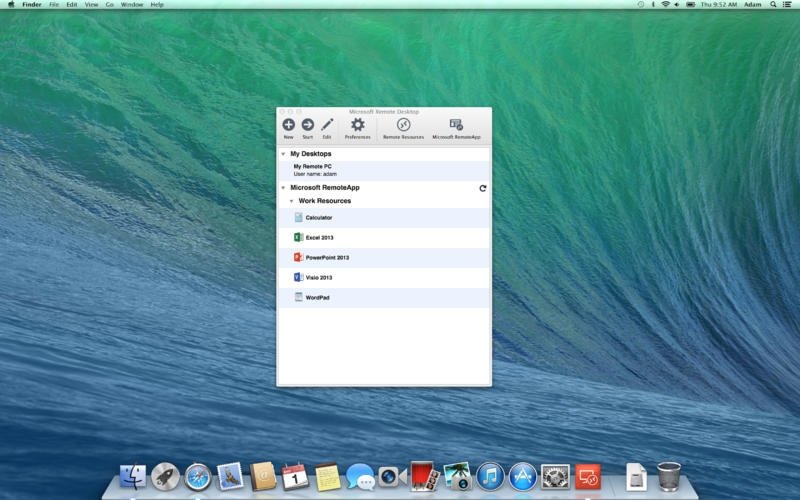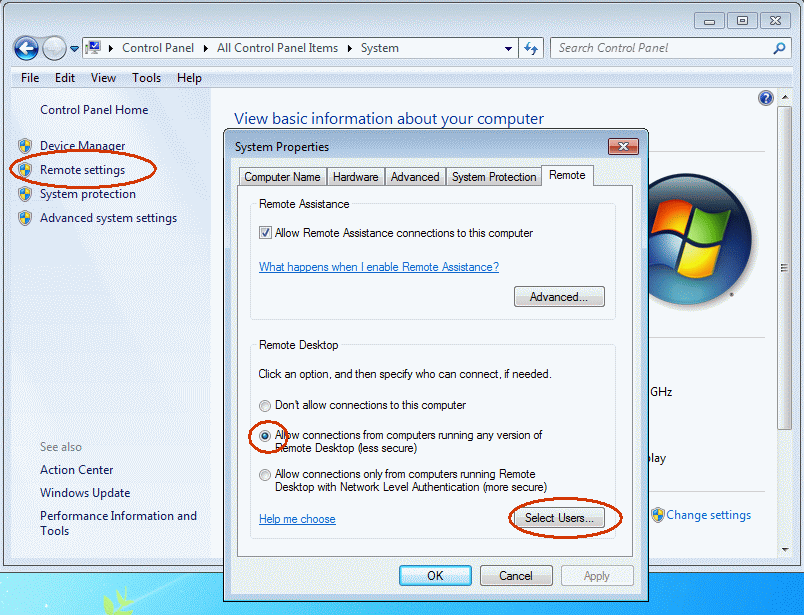
Migrate SQL Server workloads to the cloud at lower total cost of ownership (TCO)
#Microsoft remote desktop workspace windows
Manage and scale up to thousands of Linux and Windows VMsīuild and deploy Spring Boot applications with a fully managed service from Microsoft and VMwareĪ dedicated physical server to host your Azure VMs for Windows and LinuxĬloud-scale job scheduling and compute management Remove data silos and deliver business insights from massive datasetsĪccess cloud compute capacity and scale on demand-and only pay for the resources you use Secure, develop, and operate infrastructure, apps, and Azure services anywhere Jump in and explore a diverse selection of today's quantum hardware, software, and solutions
#Microsoft remote desktop workspace code
Quickly create powerful cloud apps for web and mobileĮverything you need to build and operate a live game on one platformĮxecute event-driven serverless code functions with an end-to-end development experience Migrate, modernize, and innovate on the modern SQL family of cloud databasesīuild or modernize scalable, high-performance appsĭeploy and scale containers on managed KubernetesĪdd cognitive capabilities to apps with APIs and AI services Provision Windows and Linux VMs in secondsĮnable a secure, remote desktop experience from anywhere If the reply was helpful, please don’t forget to upvote or accept as answer, thank you.Explore some of the most popular Azure products If you have any other questions or need assistance with anything, please don't hesitate to let me know. This additional information can provide further insights into the root cause of the problem and assist in further troubleshooting. If the issue persists after attempting these troubleshooting steps, it would be helpful to gather more information such as error logs or event viewer entries related to the failed login attempts. Review the Group Policy settings and make any necessary adjustments. Check if any Group Policies related to remote desktop access or credentials are applied to the affected users or client machines. Group Policy settings: Group Policy settings can affect the behavior of the Remote Desktop Connection program. Additionally, check for any available updates for the remote desktop server to ensure compatibility. It's worth confirming that the Remote Desktop Connection program on the client machines is up to date. Version compatibility: The Remote Desktop Connection program comes in different versions, and compatibility issues can arise between the program version and the remote desktop server. You can also try connecting from a different network or location to rule out network-related issues. Ensure that the client machine has a stable internet connection and can reach the remote desktop server. Network connectivity issues: It's possible that network connectivity problems are preventing the Remote Desktop Connection program from establishing a connection. Close all the windows and attempt to reconnect. In the "Gateway Server Credentials" window, click on the "Delete" button next to the cached credentials for the affected user.į. Click on the "Settings" button under the "Connect from anywhere" section.Į.


Click on the "Show Options" button to expand the options.ĭ. Open the Remote Desktop Connection program.ī. Let's go through some potential causes and solutions:Ĭredential caching issue: The Remote Desktop Connection program caches credentials, and occasionally this cache can become corrupted or out of sync. Sorry for the inconvenience caused.įirstly, it's important to note that encountering login problems in the Remote Desktop Connection program can occur due to various factors. I'd be happy to help you out with your question.


 0 kommentar(er)
0 kommentar(er)
